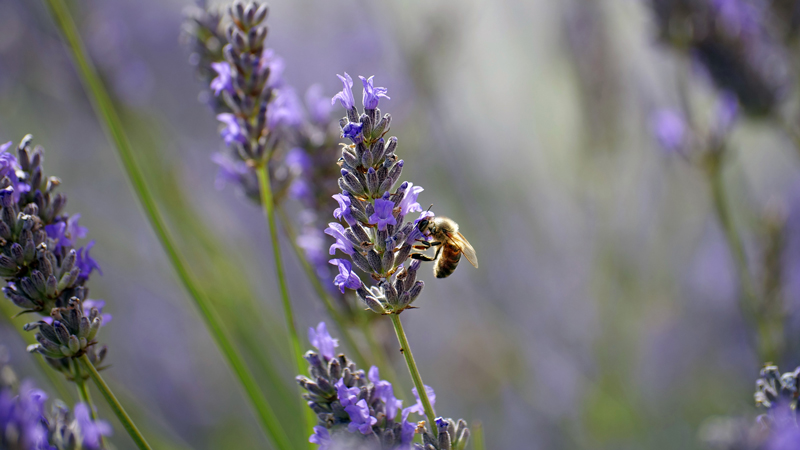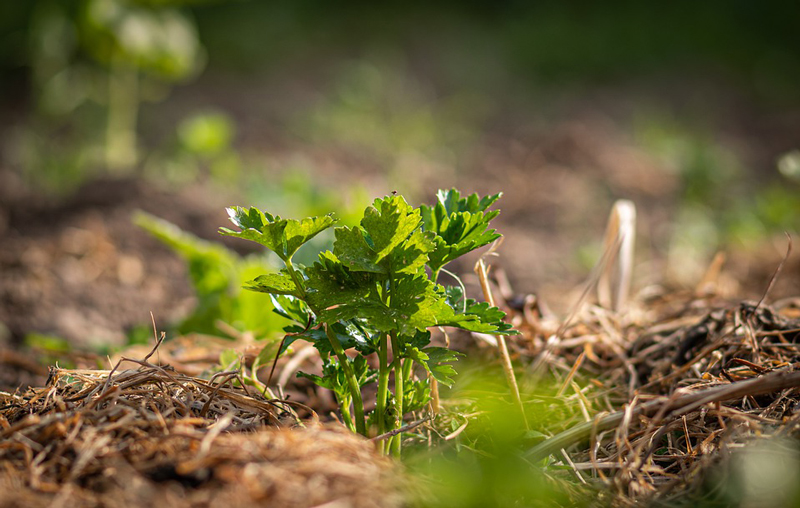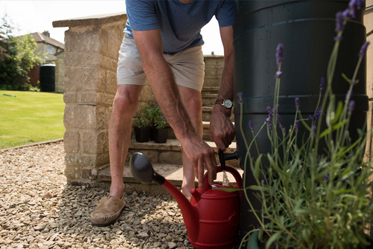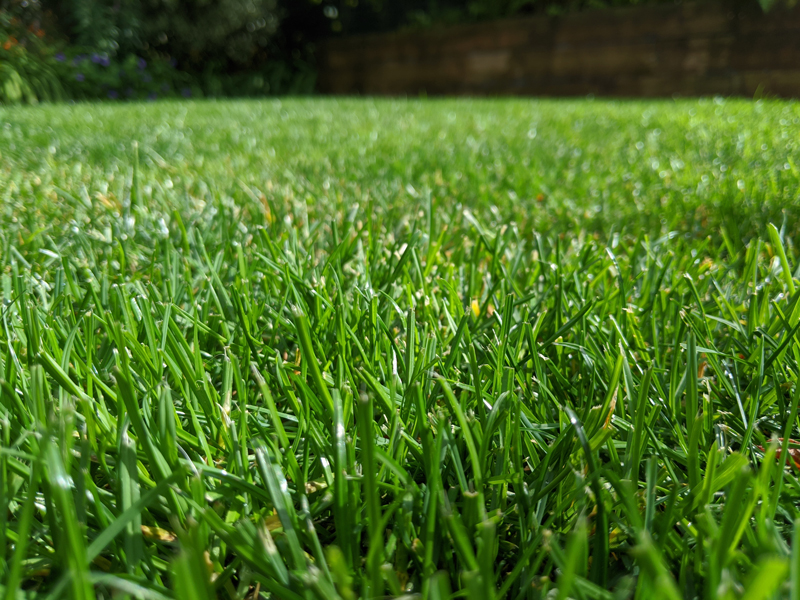Preparing your garden for summer
After a wet winter, looking out into your garden isn’t always the prettiest sight. It’s common to see an overgrown lawn, untidy bushes and weeds growing between the gaps in your patio.
If your garden looks like this, don’t worry. There are plenty of things you can do to get it ready for the warmer months, which may also help you to save water in the long run.
You may think that by creating a garden that reduces your ‘water footprint’ and improves biodiversity, you will have to compromise on the way it looks, but this doesn’t have to be the case.
Here are our top tips to create a water-efficient garden that looks great:
1. Drought-resistant planting
It’s a common misconception that to create a beautiful garden, you need to use a huge amount of water, but this isn’t quite true.
There are plenty of plants, which require little water, that would make great additions to your garden. Here are some flowers and herbs you could plant:
- Vervain has bright purple flowers that are rich in nectar and can reach heights of up to 60cm
- Lavender is a herb that has many uses and can help to create a vibrant garden
- Blue Spire is a small shrub that will bring a hint of blue to your garden and can grow to 1.5m tall
- Salvia, otherwise known as ‘hot lips’, blooms red and white flowers and has a wonderful floral smell
More information about how to create a drought-resistant garden can be found on the Royal Horticultural Society’s website.
2. Prune and weed
You may need to carry out some general maintenance throughout your garden to allow your flowers to flourish during summer.
Weeds are a gardener’s worst nightmare and they usually grow all over the place. Removing them will help to ensure they aren’t stealing nutrients from your other plants.
During autumn, leaves and branches tend to die. It’s worth pruning and removing old branches and leaves to create room for new buds to grow.
3. Apply mulch
Mulch is a layer of material that is applied to soil. It usually consists of straw, chopped leaves, hay, grass clippings, bark and more.
It can play a key role in making your garden look presentable, while also helping you to save water, as it prevents the growth of weeds and helps soil to retain moisture.
By applying mulch to your flower bed, less water will be lost through evaporation during hot spells, meaning you won’t have to water your plants as often.


4. Start composting
Good compost will improve your soil by helping to build its structure and retain water and nutrients, while also helping to protect it against droughts and disease.
You can make your own compost at home – it’s more straightforward than you may think! Either buy a compost bin or make one yourself using planks of wood.
Use your composting bin to discard organic waste, such as vegetable and fruit peelings, grass clippings, prunings, coffee grounds and eggshells.
Once it starts breaking down, you will be left with compost which will keep your soil and plants healthy. Eartheasy explains how to make compost in more detail on their composting page.
5. Install a water butt
To get ready for warm weather, you could install a water butt to collect rainwater. This water supply can then be used to water your plants during dry spells, as well as cleaning your car and patio!
Not only is this water free of charge, but it is also the best type of water for your plants. To set it up, simply connect it to your downpipe.
If you don’t have enough room for a standard water butt in your garden, there are plenty of smaller versions that may be more suitable.
Another way to avoid using additional water in the garden is to reuse household water. Make use of bathing and washing up water by reusing it on your indoor and outdoor plants.
6. Clean tools
When was the last time you cleaned your garden tools? If it was a while ago, you might need to give them a good scrub.
Leaving them covered in dirt can cause rust to build up and make them more likely to break, while also spreading disease onto your plants.
Wash your tools regularly to preserve them and ensure your plants remain healthy. To save water, we recommend using rainwater or leftover household water.
Occasionally sharpening and oiling your tools may also help to improve their performance.
7. Protect your lawn
When the weather starts getting drier, people start to cut their lawns for the first time. Make sure to leave the blades on your lawn mower high to develop deep root systems and a healthier lawn.
There is also no need to turn on your sprinklers or hosepipe to maintain your lawn during summer. Don’t panic if it starts turning brown – as soon as wet weather returns it will turn green again in no time.
If you insist on watering your lawn, considering using a watering can or applying a water-efficient nozzle to the end of your hosepipe to reduce your water usage.
8. Attract wildlife
Wildlife can take your garden to the next level and there are a number of ways you can attract birds, butterflies, hedgehogs and more.
Firstly, you will need to make your garden accessible. By adding a hole or two to the bottom of your fence, wildlife will be able to come and go as it pleases – check with your neighbours beforehand!
You could also put out food and build shelters for animals and insects. The Wildlife Trusts has a range of activities on its website that could help you create a wildlife-friendly garden.


